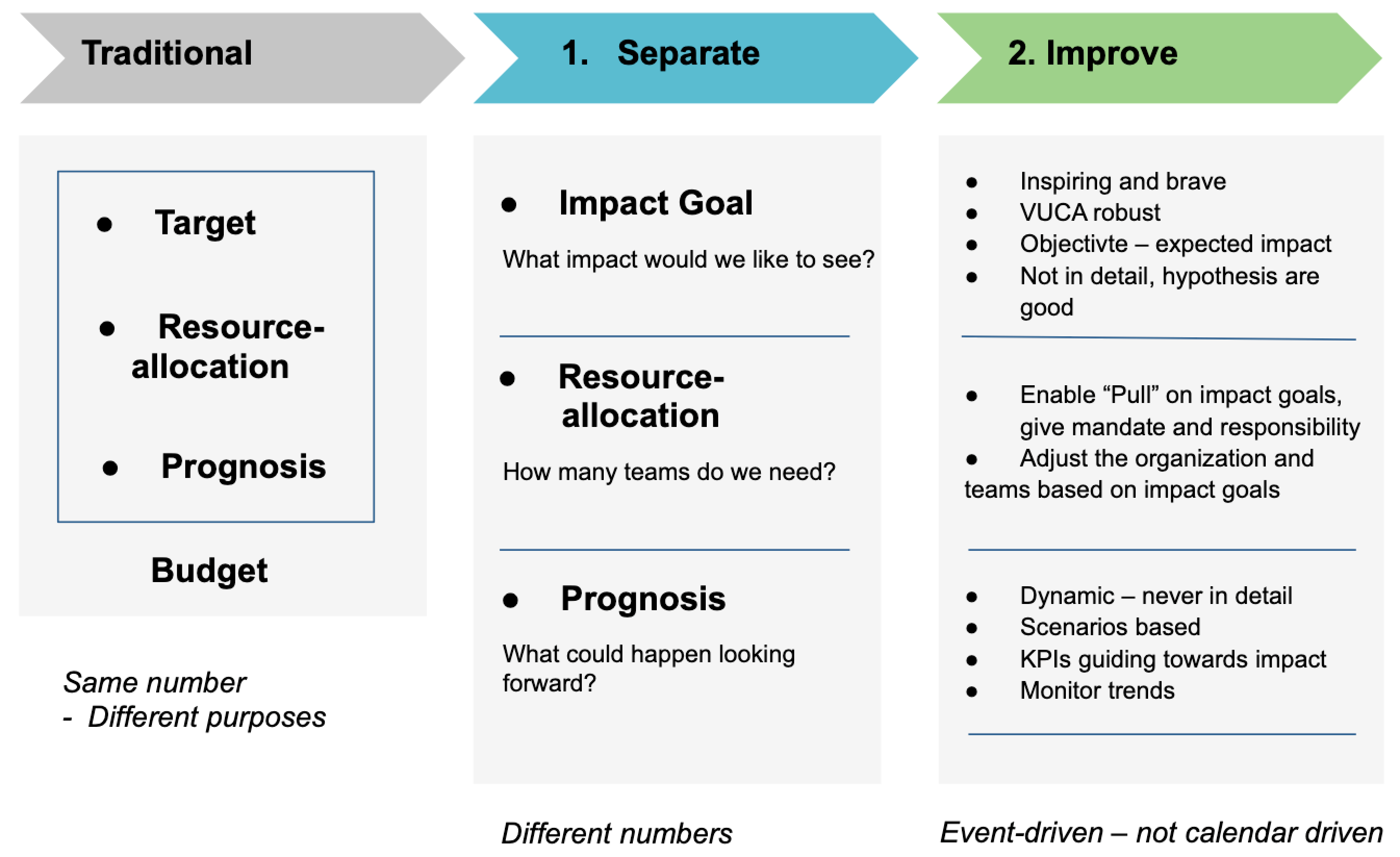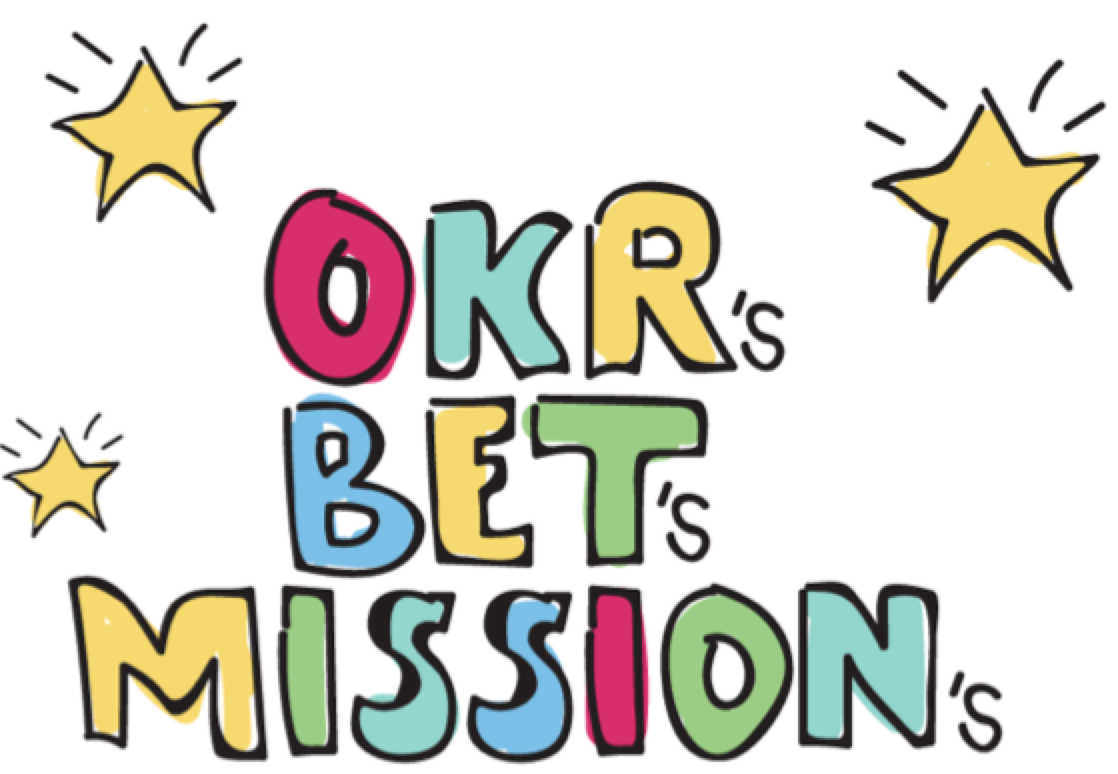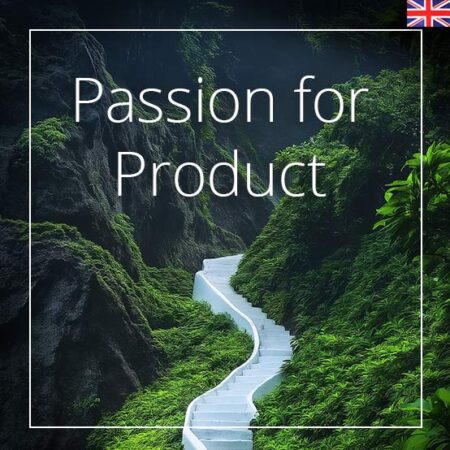A CEO once said that he did not ever again want to see the company miss a chance with the customers just because the marketing department did not have the budget to market a new product that emerged from customer feedback. Having everyone aligned around the customer, working cross-functionally, and being able to shift focus as ONE organization to join in the dance is becoming a competitive advantage.

Traditional budgeting and financial steering do not work well with Agile Ways of Working and it does not support the strategic flexibility that we often need in today’s VUCA-world. Based on the Beyond Budgeting principles and inspired by the practices more dynamic ways of handling the financial side of the business have started to emerge that in a better way enables agility in the organization.
Getting started by separating the processes
When moving from traditional budgeting to dynamic budgeting, most organizations start with separating the budgeting process into three different parts: target, resource allocation, and prognosis. The reason for this is that they are all different numbers, and we need to be able to optimize each process to become more dynamic.

Separation like this enables us to start to elaborate and improve each of these different parts. We always want to make sure to make our processes event-driven – and not calendar-driven.
Impact Goal
We want to make it:
Instead of fixed goals, we set impact goals that enable us to look for different solutions and work outcome-based instead of output-based.
- Inspiring and brave
- VUCA robust
- Objective – expected impact
- Not in detail, hypothesis are good
Here we can start to experiment with different ways of working with goals. Some organizations try and like Objective and Key Results, OKRs, others might like Compay Bets and Team Missions better, and some might find their own way based on the principles (see more in the Agile Management part about this).

There are no one-size-fits-all, but rather you have to look at the context, culture, and nature of the business to see what fits and dare to experiment and try different ways of improving both autonomy and alignment. The ultimate goal should probably be that we do the right things and that we can change the plan in a good way based on new insights.
Resource allocation
An Agile organization is team-based which makes it really easy to do resource allocation and to do the budgeting for our people. Everyone belongs to a team, and we put impact goals or projects on teams, instead of pulling people to different projects. This helps us keep teams together over long periods of time, and enables them to become well functioning and high performing, which increase the speed of delivery often by several hundred percent.
We want to:
- Enable “Pull” on impact goals gives mandate and responsibility to the teams
- Adjust the organization and teams based on impact goals
A common problem for many organizations “going Agile” is that the financial department and the people working in Agile teams are not collaborating enough and therefore operate with BOTH agile teams AND traditional budgeting. Running the business with two parallel operating systems makes it slow and ineffective with lots of unnecessary bureaucracy, not seldom without conflicts. If you recognize this, you are not alone, and trying out this together will get you started on a shared path towards business agility.
Prognosis
We often want to know how it looks ahead. But if we have a fixed plan, we often look for the wrong things and are more fixed on following the plan than changing the plan to reach the impact. The more volatile and fast-paced our market and environment is, the shorter prognosis we can, and should do.
We want to make it:
- Dynamic – never in detail
- Scenarios based
- KPIs guiding towards impact as leading metrics, but never to be seen as goals
- Monitor trends
- Shorter time-span



